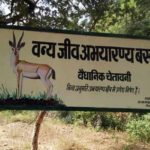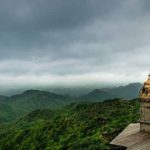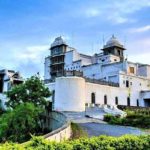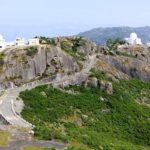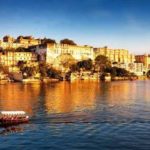Sajjangarh Wildlife Sanctuary Udaipur is situated 5km in the West of Udaipur, the lake city, which surrounds the Sajjangarh Palace overlooking Udaipur City. From the Sajjangarh Palace, one can have a magnificent view of lakes of Udaipur and Aravalli hill ranges. The view of Sunrise and Sunset attracts every visitor atop of Bansdara hill.
In the Sajjangarh Wildlife sanctuary, a Safari Park was created and wild animals like Chital, Sambar, Wild Boar, and Blue Bull were reintroduced. Animals like Panther, Hyena, Hare and Jackal has reappeared apart from variety of reptiles and birds. The wall extended further and now the entire hillock has been fenced, improving the vegetal cover of the sanctuary area. In the Hills, at a short distance on the North-West of Sajjangarh, there is an artificial lake named Jiyan Sagar, popularly known as “Bari Lake” or “Tiger Lake”.
The lake was constructed by Maharana Raj Singhji, the ex-ruler of Mewar, in 1664 AD and was named after Jana Devi, the mother of the Maharana. The lake has an area of 1.25 square miles with a storage capacity of 400 million cubic feet of water.
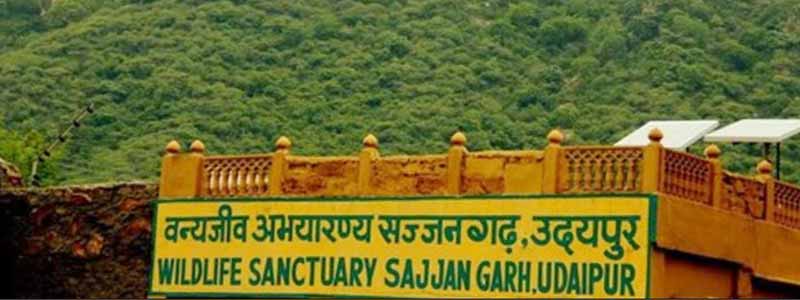
History of Sajjangarh Wildlife Sanctuary
Sajjangarh Wildlife Sanctuary is a salient part of Sajjangarh Palace built-in 1884. The Palace derived its name from Maharana Sajjan Singh, one of the bravest rulers of the Mewar dynasty. Constructed in stunning white marble with nine floors, the Palace offers marvelous views of Lake Pichola and nearby areas.
Sajjangarh Palace is also known as Monsoon Palace as it served as a galactic center to the King. Maharana Sajjan Singh used the Palace to keep track of monsoon clouds, and the nearby areas were used as a hunting ground Udaipur Attractions.
Hunting had been a glorious sport in ancient times. Hunting was a reflection of the King’s bravery; therefore, the Sajjangarh Wildlife Sanctuary was earlier used as a hunting ground by the royal members of the Mewar dynasty of Udaipur.
The area is thickly wooded, making it a better shooting preserve for royal hunters. However, post-independence, the government of India made hunting an illegal activity. Therefore in 1987, these hunting grounds were converted into a Wildlife Sanctuary to preserve and protect wildlife species.
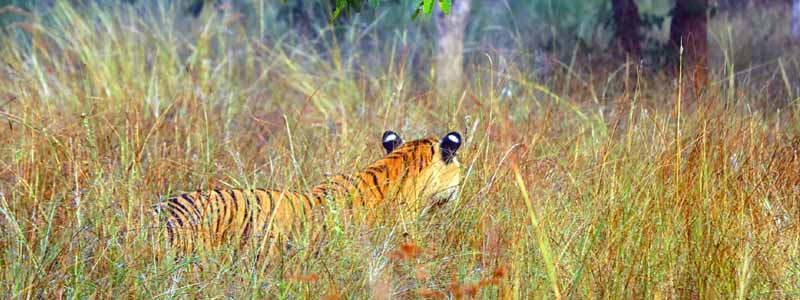
Architecture of Sajjangarh Wildlife Sanctuary
Sajjangarh Wildlife Sanctuary is spread in 5.19 square kilometers. There is a rock-solid wall of Kishan Pol which protects the sanctuary. Recently, the fencing of the entire hillock region is done to keep the vegetal cover intact. The sanctuary is facilitated with a small network of roads to ease the accessibility to various parts of the Safari Park.
There is an artificial lake named Jiyan Lake which supports the sanctuary. The lake is also referred to as Tiger Lake or Bari Lake. Built-in 1664, this lake was built by Maharana Raj Singh of Mewar dynasty. The King named the lake on his mother’s name, Jana Devi. The Jiyan Lake covers 1.25 square miles and has a huge water storage capacity of about 400 million cubic feet Udaipur Tour Packages.
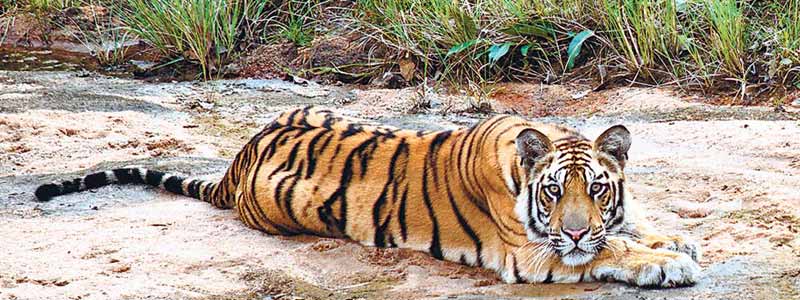
Attractions in Sajjangarh Wildlife Sanctuary
The major attraction of Sajjangarh Wildlife Sanctuary is an artificial lake named Jiyan Sagar, which is widely known as “Bari Lake” or “Tiger Lake”. Maharana Raj Singhji, the ex-ruler of Mewar, made this lake and named it after his mother, Jana Devi. The lake has an area of 1.25 square miles with a storage facility of 400 million cubic feet of water. This is an ideal spot for picnics and swimming as it is a clean lake. You can view herbivores like chital, sambar, blue bull, wild boar, etc. from close quarters in this safari park.
A network of jungle roads are created to arrive at diverse parts of the safari park. From Gorilla viewpoint you can go to Bari Lake through the Maharana Pratap nature trail and can watch the beautiful natural beauty of Aravalli hills along with rich flora and fauna in the area. There is a Jhar Water Hole, which is a constant source of water, is situated on Western phase of Bansdara hills. It is bounded by number of ancient Mahua trees. Near the waterhole, there is a temple dedicated to Lord Shiva.
This place is an ideal place to experience the effect of micro-climate with surrounded forest area by sitting at this place. During the rainy season, the springs flowing through the area add the extra beauty to the sanctuary. Sajjangarh Sanctuary is a place rich with wildlife as well as abundance of flora and fauna.
Best Time to Visit Sajjangarh Sanctuary
According to me, You must visit Sajjangarh between August to February months because the rainy season adds plus points for nature lovers and the winter season is best for hikers.
How to Reach Sajjangarh Wildlife Sanctuary, Udaipur
By Railway : The nearest station is the Udaipur Railway station to reach Sajjangarh. Wildlife Sanctuary is about 7 km away from the railway station.
By Airway : The Nearest airport to reach Sajjangarh Sanctuary is Maharana Pratap Airport of Udaipur. It is about 27 km away from the sanctuary.
By Roadway : It is well connected with roads from the main city of Udaipur. It is settled on NH-76A and the distance from major cities are mentioned below:-
| Major Cities | Distance |
| Jaipur | 399 Km (Via NH 58) |
| Jodhpur | 240 Km (Via NH 62-RJSH32) |
| Jaisalmer | 483 Km (Via NH 68) |
| Bikaner | 489 Km (Via NH 58) |
| Kota | 288 Km (Via NH 27-48) |
| Kishangarh | 296 Km (Via NH 58) |

